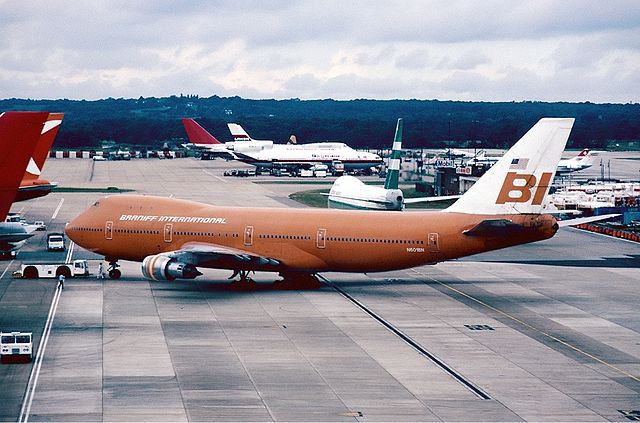JETRAIL Service aimed to revolutionize the terminal experience. It worked, but never took off.
In 1970, The New York Times ran a story on the Braniff International Airways gondolas at Love Field. As one might imagine, in 1970, a $2 million “jet rail” system (aka, a monorail) that whisked passengers from airport parking nearly a mile away from the airport to the main terminal in approximately four minutes was the height of technology. In fact, it was the world’s first fully automated monorail transit system — it was a big deal and deserved some nationwide press.
If you’ve been to Dallas Love Field recently, you can probably attest to the airport’s resurgence. You’ll see the efforts to accommodate increased passenger numbers with a fresh terminal, great restaurants, and innovative signage. The same can be said for the airport back in the early 70s. The gondola system was an initial attempt to alleviate some of the crowds around the main terminal. It was also designed to lessen backed-up traffic due to cars unloading passengers there, as well as provide shelter and convenience for those who parked their vehicles and then walked the nearly mile trek to and from the airport.
The gondola system was planned in conjunction with a new terminal, which opened in 1968 to accommodate Braniff International Airways’ brand-new Boeing 747 aircraft that would be arriving and departing from the airport. (Braniff International Airways, which operated from 1928 through 1982, used Dallas Love Field as one of its hubs, and called its new terminal the “Terminal of the Future.”)

The Braniff JETRAIL Passenger Experience Was Pretty Epic
According to The Times, the gondola system, when it first opened, worked like this:
A passenger pulls into the parking facility and receives their parking ticket. Their baggage is placed on either a baggage gondola or a truck (it’ll be taken straight to the aircraft). Then, the passenger gets into the passenger gondola and heads to the terminal. When a passenger arrived back at the airport, their luggage was similarly taken to the parking facility via the gondolas, so the passenger didn’t need to spend unnecessary time waiting around the baggage claim.
The gondolas, which were air-conditioned and heated, traveled at 15 miles per hour, 17 feet up in the air, and were outfitted with buttons similar to what you’d find on an elevator today. Each gondola held 10 passengers (with seating for six) and had room for their personal items. Ten gondolas were running when the system opened in 1970.
At that time, Bill B. Grimes, vice president for properties and facilities, Braniff, told The Times that he suspected every airport in the world would have a similar gondola system by 1975. However, Grimes would be very, very wrong — the Braniff gondolas would cease operations by the fall of 1974.
Braniff Abandons Its Terminal of the Future
In January 1974, Braniff moved its hub from Dallas Love Field to the newly opened DFW. Braniff played a significant role in DFW’s planning and was able to test more of its futuristic travel technology there. Braniff still operated intrastate service out of Love Field, but then abandoned that service in September 1974. At that time, the gondolas ceased operations for good, having traveled 500,000 vehicle miles per year and carried more than 10 million passengers over their lifetime, with a 99.9% reliability rate.
What happened to the gondolas and the JETRAIL system afterward? For a brief period, the JETRAIL parking facilities were turned into a ’70s disco. Yes, really! There was talk of converting the system into an urban project or a hotel, but neither idea came to fruition. Finally, in 1978, the entire JETRAIL system was dismantled.

